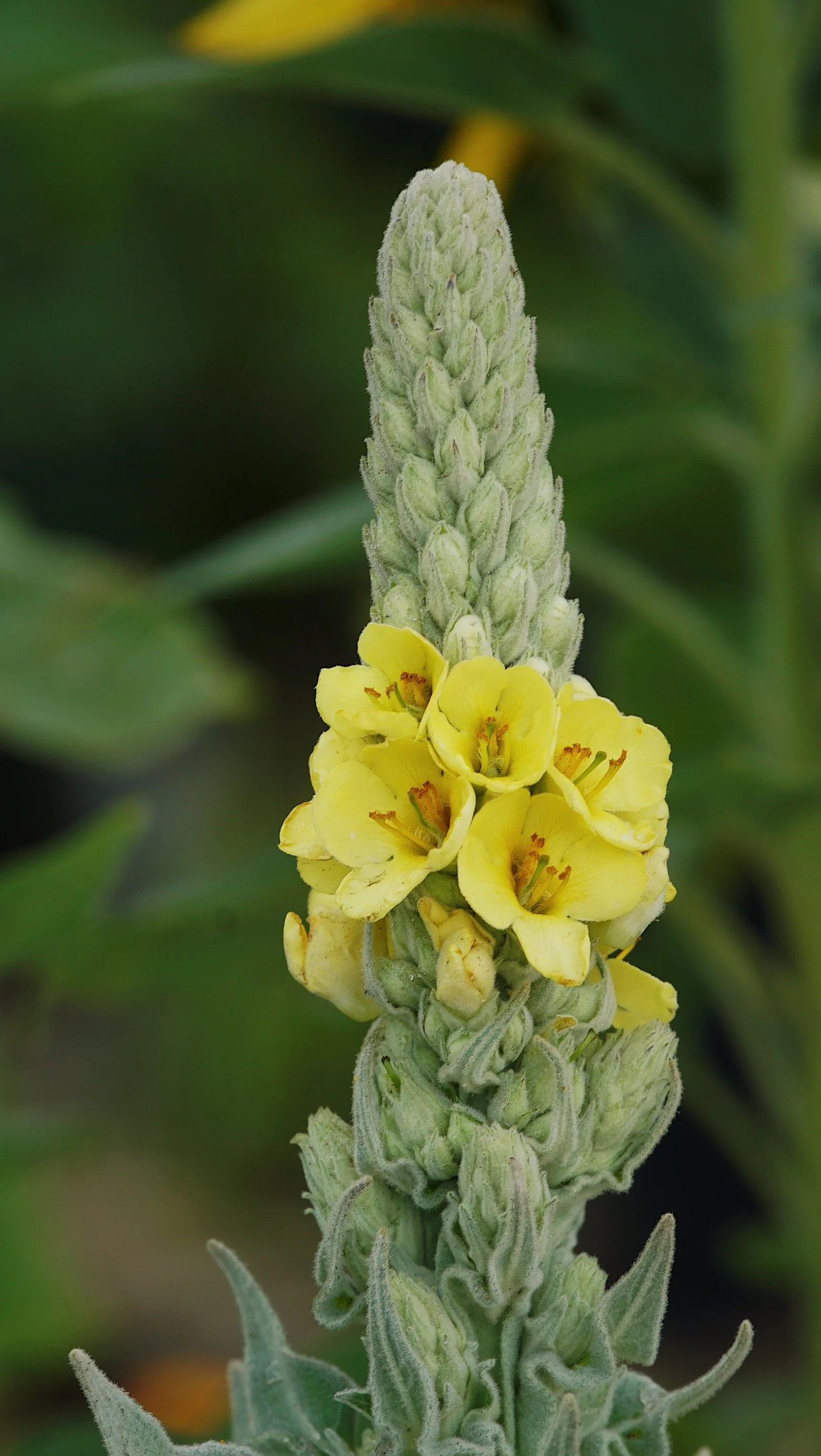Mugwort Plant
"Artemisia vulgaris"
Plant Availability: From Early Spring to Late Autumn
Pot Size: 1L
Benefits
Mugwort has a strong tradition in ancient herbal medicine and folklore. The plant has an antiseptic and antifungal action, and is also said to relieve itching, burning and stinging sensations when freshly crushed leaves are applied to the skin. Mugwort is also used as an adaptogen, a general tonic, an expectorant, diuretic and as a digestive aid. Chewing fresh leaves reportedly acts as a stimulant and nervous tonic. It is also used to expel pinworms. The chemicals in the plant mean that it is slightly toxic, more if a lot is consumed. Caution is advised and consumption should not be for more than a week.
Uses
Mugwort leaves can be made into a tea by infusing the leaves in boiling water for 10 minutes. Can also be used in the bath for muscle relief. Can be used as a herbal smoke.
Growing Conditions
Season: Spring to Summer - Perennial
Soil: Can tolerate poor dry soils and partial shade
Watering: Water Regularly , Likes very well drained soil. Doesn't like boggy wet soil
Position: Full Sun, Moist Soil
Fertilizing: Compost, Manure, Liquid feed
Use: Used as a tonic to help treat stomach and intestinal problems. Can be used as a herbal smoke and as a tea. Has also been known to help enhance your dreamstate.
Growing tips: Best to keep in a pot, mugwort can be invasive as its root system is very vigorous. Does not tolerate wet soil conditions.
Companion Plants: Wormwood, Rosemary, Carrots, Leeks & Sage
CAUTION\DISCLAIMER
These plants are not intended to treat, diagnose, cure, or alleviate the effects of diseases. DO NOT USE WHILE PREGNANT
"Artemisia vulgaris"
Plant Availability: From Early Spring to Late Autumn
Pot Size: 1L
Benefits
Mugwort has a strong tradition in ancient herbal medicine and folklore. The plant has an antiseptic and antifungal action, and is also said to relieve itching, burning and stinging sensations when freshly crushed leaves are applied to the skin. Mugwort is also used as an adaptogen, a general tonic, an expectorant, diuretic and as a digestive aid. Chewing fresh leaves reportedly acts as a stimulant and nervous tonic. It is also used to expel pinworms. The chemicals in the plant mean that it is slightly toxic, more if a lot is consumed. Caution is advised and consumption should not be for more than a week.
Uses
Mugwort leaves can be made into a tea by infusing the leaves in boiling water for 10 minutes. Can also be used in the bath for muscle relief. Can be used as a herbal smoke.
Growing Conditions
Season: Spring to Summer - Perennial
Soil: Can tolerate poor dry soils and partial shade
Watering: Water Regularly , Likes very well drained soil. Doesn't like boggy wet soil
Position: Full Sun, Moist Soil
Fertilizing: Compost, Manure, Liquid feed
Use: Used as a tonic to help treat stomach and intestinal problems. Can be used as a herbal smoke and as a tea. Has also been known to help enhance your dreamstate.
Growing tips: Best to keep in a pot, mugwort can be invasive as its root system is very vigorous. Does not tolerate wet soil conditions.
Companion Plants: Wormwood, Rosemary, Carrots, Leeks & Sage
CAUTION\DISCLAIMER
These plants are not intended to treat, diagnose, cure, or alleviate the effects of diseases. DO NOT USE WHILE PREGNANT
"Artemisia vulgaris"
Plant Availability: From Early Spring to Late Autumn
Pot Size: 1L
Benefits
Mugwort has a strong tradition in ancient herbal medicine and folklore. The plant has an antiseptic and antifungal action, and is also said to relieve itching, burning and stinging sensations when freshly crushed leaves are applied to the skin. Mugwort is also used as an adaptogen, a general tonic, an expectorant, diuretic and as a digestive aid. Chewing fresh leaves reportedly acts as a stimulant and nervous tonic. It is also used to expel pinworms. The chemicals in the plant mean that it is slightly toxic, more if a lot is consumed. Caution is advised and consumption should not be for more than a week.
Uses
Mugwort leaves can be made into a tea by infusing the leaves in boiling water for 10 minutes. Can also be used in the bath for muscle relief. Can be used as a herbal smoke.
Growing Conditions
Season: Spring to Summer - Perennial
Soil: Can tolerate poor dry soils and partial shade
Watering: Water Regularly , Likes very well drained soil. Doesn't like boggy wet soil
Position: Full Sun, Moist Soil
Fertilizing: Compost, Manure, Liquid feed
Use: Used as a tonic to help treat stomach and intestinal problems. Can be used as a herbal smoke and as a tea. Has also been known to help enhance your dreamstate.
Growing tips: Best to keep in a pot, mugwort can be invasive as its root system is very vigorous. Does not tolerate wet soil conditions.
Companion Plants: Wormwood, Rosemary, Carrots, Leeks & Sage
CAUTION\DISCLAIMER
These plants are not intended to treat, diagnose, cure, or alleviate the effects of diseases. DO NOT USE WHILE PREGNANT














